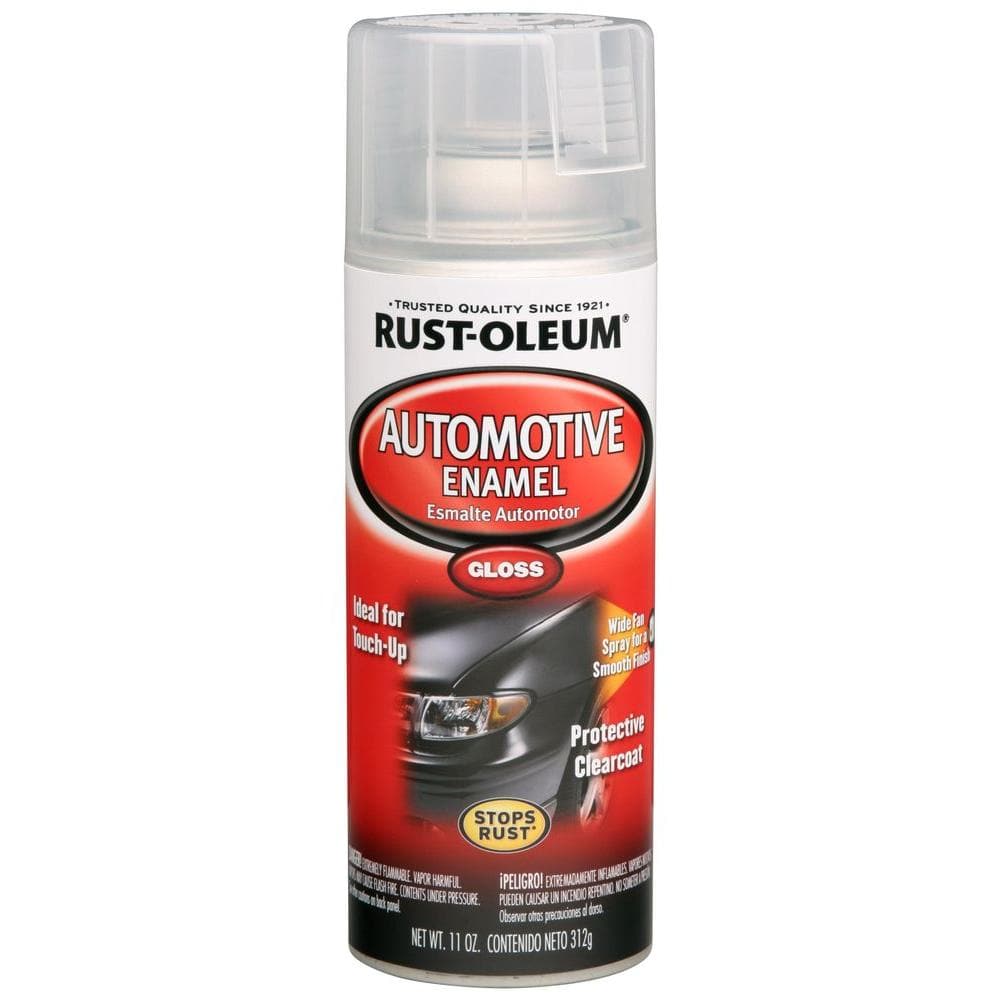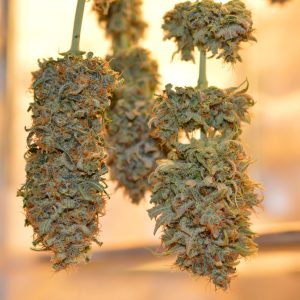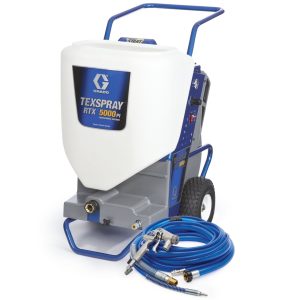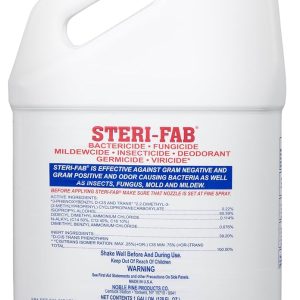
When it comes to protecting your vehicle’s paint job and achieving that showroom-quality finish, automotive clear coat in spray can products have revolutionized the way car enthusiasts and professionals approach paint protection. These convenient aerosol solutions offer the same protective benefits as traditional clear coat systems while providing unmatched ease of application and accessibility for both DIY enthusiasts and professional detailers.
The popularity of spray can clear coat for automotive use has surged dramatically in recent years, with the global automotive refinish coatings market projected to reach $12.8 billion by 2027. This growth reflects the increasing demand for convenient, high-quality paint protection solutions that deliver professional results without the need for expensive spray equipment or specialized facilities.
Understanding Automotive Clear Coat Technology
What Makes Clear Coat Essential for Vehicle Protection
Automotive clear coat in spray can formulations represent a sophisticated blend of resins, solvents, and additives designed to create a durable, transparent protective layer over your vehicle’s base paint. This protective barrier serves multiple critical functions that extend far beyond simple aesthetics, making it an indispensable component of modern automotive finishing systems.
The primary function of clear coat involves creating a sacrificial layer that absorbs the brunt of environmental damage, including UV radiation, acid rain, bird droppings, tree sap, and minor scratches. Without this protective shield, your vehicle’s color coat would be directly exposed to these elements, leading to rapid deterioration, fading, and permanent damage that can significantly impact your car’s resale value and appearance.
Modern spray can automotive clear coat products utilize advanced polymer technology that creates cross-linked molecular structures when cured. These structures provide exceptional durability, chemical resistance, and optical clarity that rivals professionally applied clear coat systems. The convenience factor cannot be overstated – these products eliminate the need for expensive spray guns, compressors, and paint booths while still delivering professional-grade protection.
Types of Clear Coat Formulations Available
| Clear Coat Type | Durability | Application Ease | Dry Time | Best Use Case |
|---|---|---|---|---|
| Acrylic Lacquer | 2-3 years | Easy | 30-45 minutes | Touch-ups, hobby projects |
| Urethane | 5-7 years | Moderate | 2-4 hours | Professional repairs |
| Ceramic-Enhanced | 7-10 years | Moderate | 1-2 hours | High-end applications |
| UV-Resistant | 4-6 years | Easy | 45-60 minutes | Sun-exposed vehicles |
The evolution of automotive clear coat spray can technology has led to several distinct formulation types, each engineered for specific applications and performance requirements. Understanding these differences enables you to select the most appropriate product for your particular needs and environmental conditions.
Acrylic lacquer clear coats represent the most accessible option for beginners and casual users. These formulations offer excellent ease of application, quick drying times, and forgiving characteristics that make them ideal for small touch-up jobs and hobby projects. While they may not provide the longest-lasting protection, they excel in situations where quick repairs are needed or when working on classic vehicles that originally used lacquer systems.
Urethane-based clear coats deliver superior durability and chemical resistance, making them the preferred choice for professional applications and high-traffic vehicles. These formulations create harder, more durable surfaces that better resist scratching, chemical etching, and environmental damage. The trade-off involves slightly more complex application requirements and longer curing times, but the extended protection period justifies the additional effort.
Choosing the Right Spray Can Clear Coat
Key Performance Factors to Consider
Selecting the optimal automotive clear coat in spray can requires careful evaluation of multiple performance characteristics that directly impact both application success and long-term durability. The decision process should begin with an honest assessment of your skill level, available equipment, environmental conditions, and specific protection requirements.
Adhesion properties represent perhaps the most critical performance factor, as poor adhesion leads to peeling, flaking, and premature failure regardless of other positive characteristics. High-quality clear coat formulations incorporate specialized adhesion promoters that create strong chemical bonds with both factory paint and aftermarket color coats. Look for products specifically designed for automotive applications, as these formulations undergo rigorous testing to ensure compatibility with various paint systems.
UV resistance capabilities vary significantly between different clear coat formulations, with some products offering specialized UV absorbers and stabilizers that prevent yellowing, chalking, and gloss reduction over time. Vehicles regularly exposed to intense sunlight, particularly in southern climates or high-altitude areas, benefit substantially from premium UV-resistant formulations that maintain optical clarity and protective properties for extended periods.
Chemical resistance becomes increasingly important in areas with harsh environmental conditions, including regions with frequent acid rain, industrial pollution, or winter road salt applications. Premium spray can clear coat automotive products incorporate specialized resins and additives that resist chemical etching, staining, and degradation from common automotive contaminants.
Application Environment and Timing Considerations
The success of any automotive clear coat spray can application depends heavily on environmental conditions during both application and curing phases. Temperature, humidity, air circulation, and contamination levels all play crucial roles in determining final results and long-term performance.
Optimal temperature ranges typically fall between 65°F and 85°F (18°C to 29°C), with relative humidity below 50% for best results. Higher temperatures accelerate solvent evaporation, potentially causing orange peel texture, dry spray, and poor flow characteristics. Lower temperatures slow curing times and may prevent proper cross-linking, leading to soft, easily damaged surfaces.
Humidity control proves especially critical during clear coat application, as excessive moisture can cause clouding, poor adhesion, and extended curing times. Professional detailers often use dehumidifiers and proper ventilation systems to maintain optimal conditions, but DIY enthusiasts can achieve similar results by choosing appropriate weather conditions and working in controlled environments.
Contamination prevention requires careful attention to dust, pollen, insects, and other airborne particles that can become embedded in the clear coat during application. The sticky nature of fresh clear coat makes it particularly susceptible to contamination, making proper preparation and timing essential for achieving professional results.
Professional Application Techniques
Surface Preparation Best Practices
Achieving professional results with automotive clear coat in spray can applications begins with meticulous surface preparation that removes all contaminants, imperfections, and barriers to proper adhesion. This critical phase often determines the difference between a durable, long-lasting finish and premature failure that requires complete refinishing.
Thorough cleaning represents the foundation of proper surface preparation, requiring multiple steps to ensure complete removal of all contaminants. Begin with a comprehensive wash using automotive-specific detergents that effectively remove road grime, salt, and organic deposits without leaving residues that could interfere with adhesion. Follow this with a clay bar treatment to remove embedded contaminants that washing alone cannot eliminate.
Sanding procedures vary depending on the condition of the existing finish and the specific spray can automotive clear coat product being used. Fresh paint applications typically require light sanding with 600-800 grit sandpaper to provide adequate surface texture for optimal adhesion. Existing clear coat surfaces may need more aggressive sanding to remove oxidation, scratches, and other defects that would telegraph through the new clear coat.
Solvent wiping serves as the final preparation step, using specialized automotive solvents or tack cloths to remove all sanding residues, fingerprints, and microscopic contaminants that could cause adhesion problems or surface defects. This step requires careful attention to technique, as improper wiping can actually spread contaminants rather than removing them.
Spray Technique and Pattern Development
Mastering proper spray technique with automotive clear coat spray can products requires understanding the unique characteristics of aerosol delivery systems and developing consistent patterns that ensure even coverage and optimal film thickness. Unlike professional spray guns, aerosol systems offer less control over spray pattern and volume, making technique even more critical for achieving professional results.
Distance control proves crucial for achieving proper film thickness and avoiding common defects like runs, sags, and dry spray. Most automotive clear coat in spray can products perform optimally at distances between 6-8 inches from the surface, though specific recommendations vary by manufacturer and environmental conditions. Maintaining consistent distance throughout the application process requires steady hand control and proper body positioning.
Spray pattern overlap should typically range from 50-75% for even coverage, with each pass overlapping the previous one by approximately half the spray pattern width. This overlap ensures uniform film thickness and prevents streaking or zebra-striping effects that can become visible once the clear coat cures. Developing muscle memory for consistent overlap requires practice and attention to detail.
Application speed must be carefully controlled to maintain proper film thickness while avoiding runs and sags. Moving too quickly results in insufficient film build and poor coverage, while moving too slowly creates excessive film thickness that can lead to runs, poor curing, and long-term durability issues. Professional applicators typically maintain steady movement speeds that deposit consistent film thickness across the entire surface.
Troubleshooting Common Issues
Identifying and Preventing Application Problems
Even experienced professionals occasionally encounter problems when applying automotive clear coat in spray can products, making it essential to understand common issues, their causes, and effective prevention strategies. Recognizing potential problems early in the process allows for corrective action before they become permanent defects requiring complete refinishing.
Orange peel texture represents one of the most common issues encountered with aerosol clear coat applications. This defect appears as a textured surface resembling the skin of an orange, caused by improper spray distance, excessive air pressure, or inadequate flow characteristics. Prevention involves maintaining optimal spray distance, ensuring proper surface temperature, and selecting appropriate environmental conditions for application.
Runs and sags occur when excessive material is applied to vertical or angled surfaces, causing the clear coat to flow under the influence of gravity. These defects typically result from applying too much material in a single pass, working too slowly, or maintaining improper spray distance. Prevention requires building film thickness gradually through multiple light coats rather than attempting to achieve full coverage in fewer passes.
Solvent popping manifests as small craters or pin holes in the cured clear coat surface, caused by trapped solvents that expand and break through the surface film during curing. This problem often results from applying subsequent coats too quickly, working in excessive temperatures, or using incompatible products. Prevention involves following manufacturer-recommended flash times between coats and maintaining proper environmental conditions.
Repair and Correction Strategies
When problems do occur during spray can clear coat automotive applications, understanding effective repair strategies can often salvage the project without requiring complete refinishing. The key lies in accurate problem identification and selecting appropriate correction methods based on the specific defect and its severity.
Minor surface defects such as dust nibs, small runs, or slight texture issues can often be corrected through careful sanding and polishing techniques. This process typically involves wet sanding with progressively finer grits, followed by machine polishing to restore gloss and optical clarity. The success of these repairs depends on proper technique and having sufficient clear coat thickness to allow for material removal.
Adhesion failures require more aggressive repair approaches, typically involving removal of the failed clear coat and complete refinishing of the affected area. These repairs often extend beyond the original problem area to ensure proper feathering and blend quality. Prevention remains the best approach, emphasizing proper surface preparation and product compatibility.
Chemical damage from exposure to acids, solvents, or other contaminants may require spot repairs or complete refinishing depending on the extent and depth of the damage. Quick response to chemical exposure often minimizes damage and simplifies repair procedures.
Advanced Application Methods
Multi-Stage Clear Coat Systems
Professional-grade automotive clear coat in spray can applications often benefit from multi-stage systems that build protection and depth through carefully orchestrated layering techniques. These approaches maximize the protective benefits of clear coat while achieving superior optical depth and durability that rivals traditional spray gun applications.
Base coat preparation for multi-stage systems requires exceptional attention to surface quality and cleanliness, as any defects will be magnified through the subsequent clear coat layers. This preparation often involves wet sanding with 800-1000 grit sandpaper to achieve the optimal surface texture for clear coat adhesion while removing any imperfections that could telegraph through the final finish.
Intermediate coat applications serve multiple purposes in professional systems, including build-up of film thickness, improvement of surface smoothness, and enhancement of optical depth. These coats typically receive light sanding between applications to remove any texture or contamination while maintaining the overall film thickness needed for final finishing.
Final coat techniques focus on achieving optimal gloss, depth, and surface smoothness through careful attention to spray technique, environmental control, and timing. The final coat often receives the most critical attention, as it determines the ultimate appearance and initial protection level of the finished surface.
Specialty Clear Coat Applications
Beyond standard protection applications, automotive clear coat spray can products serve specialized purposes that require modified techniques and specific product selections. These applications often demand higher skill levels and specialized knowledge but can provide unique benefits for specific situations.
Headlight restoration represents one of the most common specialty applications, requiring clear coats specifically formulated for polycarbonate surfaces and UV resistance. These applications often involve multiple preparation steps, including wet sanding, polishing, and specialized primers before clear coat application.
Plastic and trim protection requires clear coats with enhanced flexibility and adhesion properties to accommodate the expansion and contraction characteristics of various plastic materials. These applications often benefit from specialized primers and flexible clear coat formulations.
High-temperature applications such as engine bay components or exhaust-adjacent areas require clear coats with enhanced heat resistance and thermal stability. These specialized formulations often sacrifice some optical qualities for improved durability under extreme temperature conditions.
Maintenance and Longevity
Protecting Your Clear Coat Investment
Maximizing the lifespan and performance of automotive clear coat in spray can applications requires ongoing maintenance and protection strategies that preserve the integrity of the protective layer while maintaining optimal appearance. Understanding these maintenance requirements helps ensure the best return on investment for your clear coat application.
Regular washing techniques play a crucial role in clear coat preservation, requiring methods that effectively remove contaminants without causing microscopic scratches or chemical damage. The two-bucket method, high-quality wash mitts, and pH-neutral automotive shampoos help maintain clear coat integrity while removing harmful deposits.
Protective waxing and sealing provide additional barriers against environmental damage while enhancing the appearance of the clear coat surface. Modern synthetic sealants and ceramic coatings offer superior protection and durability compared to traditional waxes, though proper application techniques remain essential for optimal results.
Contamination removal requires prompt attention to prevent permanent damage from bird droppings, tree sap, tar, and other organic or chemical contaminants. Understanding appropriate removal techniques and having the right products readily available can prevent minor contamination from becoming major problems.
Performance Monitoring and Touch-Up Procedures
Successful long-term maintenance of spray can automotive clear coat applications involves regular monitoring of surface condition and prompt attention to any developing issues. Early intervention often prevents minor problems from becoming major defects requiring extensive refinishing.
Visual inspection schedules should include monthly examinations for signs of wear, damage, or contamination that could compromise the clear coat’s protective properties. These inspections help identify problems early when they’re still easily correctable through simple maintenance or minor touch-up procedures.
Touch-up application techniques require specialized approaches that ensure proper blending and adhesion when repairing small damaged areas. These procedures often involve careful surface preparation, precise application techniques, and skilled blending to achieve invisible repairs.
Performance assessment involves evaluating the clear coat’s continued effectiveness in protecting the underlying paint and providing the desired appearance characteristics. This assessment helps determine when more extensive maintenance or complete refinishing might be necessary.
Cost-Effectiveness Analysis
Comparing Professional vs. DIY Applications
The economic advantages of automotive clear coat in spray can products become apparent when comparing costs, time requirements, and results quality against professional spray gun applications and commercial refinishing services. Understanding these comparisons helps make informed decisions about the most appropriate approach for specific situations.
Material costs for spray can applications typically range from $15-50 per quart equivalent, compared to $30-80 for professional bulk materials. However, the convenience factor and elimination of equipment costs often make spray cans more economical for small projects and occasional use.
Labor considerations favor spray can applications for DIY enthusiasts, as they eliminate the learning curve associated with spray gun operation and the time required for equipment setup, cleaning, and maintenance. Professional applicators may find spray guns more efficient for large projects but appreciate the convenience of spray cans for touch-ups and small repairs.
Quality comparisons between properly applied spray can and professional spray gun clear coats show minimal differences in protection and durability, with appearance differences being primarily cosmetic rather than functional. The key lies in proper application technique and appropriate product selection for the specific use case.
Long-Term Value Proposition
Automotive clear coat spray can products offer compelling long-term value when considering the total cost of ownership for vehicle paint protection. This value proposition extends beyond simple material costs to include factors such as preservation of vehicle value, reduced maintenance requirements, and enhanced appearance retention.
Vehicle value preservation represents perhaps the most significant long-term benefit, as properly maintained paint and clear coat can significantly impact resale value. Industry studies indicate that vehicles with well-maintained paint finishes command premium prices in the used car market, often exceeding the cost of regular clear coat maintenance by substantial margins.
Reduced maintenance costs result from the clear coat’s ability to protect underlying paint from damage that would otherwise require expensive repairs or complete refinishing. The sacrificial nature of clear coat means that minor damage affects only the protective layer rather than the expensive color coat underneath.
Extended appearance retention allows vehicles to maintain their aesthetic appeal for longer periods, reducing the need for cosmetic improvements and helping preserve owner satisfaction and pride in their vehicle’s appearance.
FAQs About Automotive Clear Coat in Spray Can
How long does automotive clear coat in spray can last?
Automotive clear coat in spray can applications typically last 3-7 years depending on environmental conditions, application quality, and maintenance practices. Premium formulations with UV protection and ceramic enhancement can extend this lifespan significantly.
Can I apply automotive clear coat in spray can over existing clear coat?
Yes, you can apply spray can clear coat automotive over existing clear coat after proper surface preparation, including light sanding and thorough cleaning. Ensure compatibility between products and follow manufacturer recommendations for optimal results.
What temperature is best for applying automotive clear coat spray can?
The optimal temperature range for automotive clear coat spray can application is 65-85°F (18-29°C) with relative humidity below 50%. Avoid application in direct sunlight or extreme temperature conditions.
How many coats of automotive clear coat in spray can should I apply?
Most automotive clear coat in spray can applications require 2-4 coats for optimal protection and appearance. Apply thin, even coats with proper flash time between applications according to manufacturer specifications.
Can automotive clear coat in spray can be wet sanded and polished?
Yes, properly cured spray can automotive clear coat can be wet sanded and polished using appropriate grits and techniques. Allow full curing time before attempting any finishing procedures.
What’s the difference between automotive and regular clear coat spray cans?
Automotive clear coat in spray can products are specifically formulated for vehicle paint compatibility, UV resistance, and durability requirements. Regular clear coats may lack these specialized properties and could cause compatibility issues.
How do I fix runs in automotive clear coat spray can applications?
Small runs in automotive clear coat spray can applications can often be corrected through careful wet sanding and polishing after full curing. Severe runs may require local refinishing with proper blending techniques.
Is primer necessary before applying automotive clear coat in spray can?
Primer is typically not required when applying automotive clear coat in spray can over existing paint or properly prepared surfaces. However, bare metal or plastic surfaces may benefit from appropriate primer applications.
For those looking to expand their knowledge of protective coating applications, consider exploring techniques used with ben nye setting spray for theatrical and professional makeup applications, which shares similar principles of protective layering and application techniques.
Ready to protect your vehicle’s paint with professional-grade results? Browse our selection of premium automotive clear coat in spray can products and find the perfect solution for your specific needs. Shop Now and experience the difference quality clear coat protection can make for your vehicle’s appearance and value.





